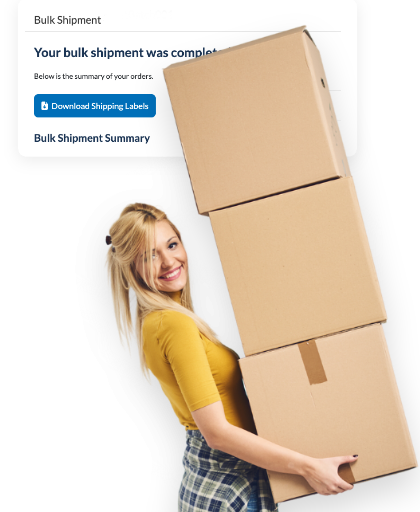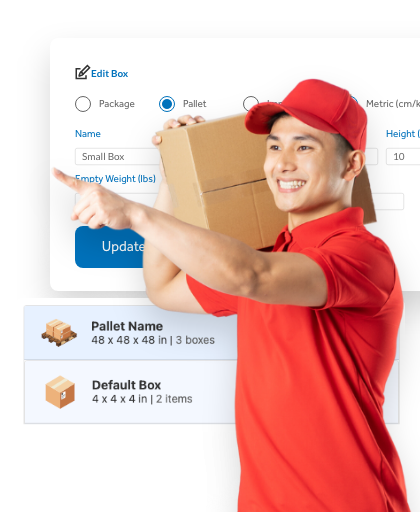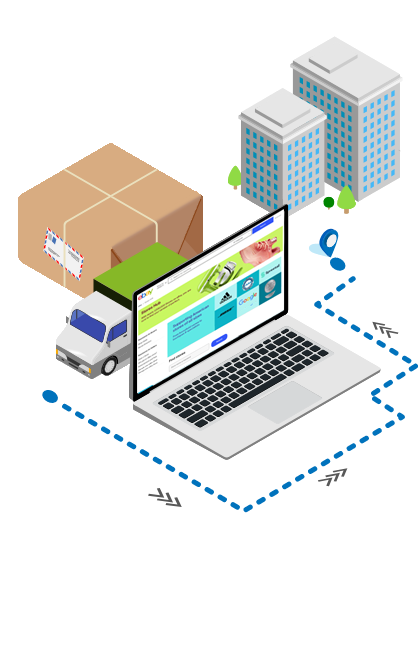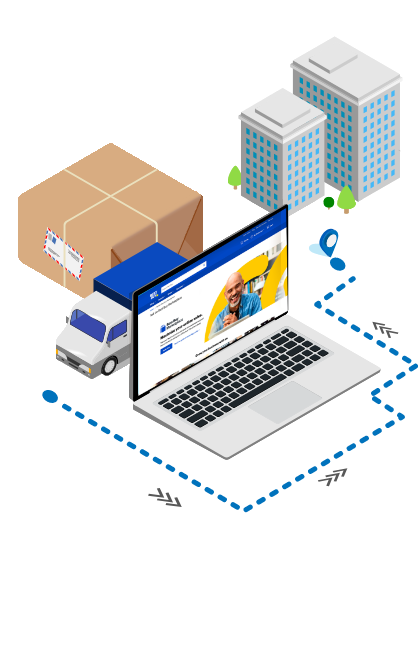Tariff Updates and ClickShip's 2025 CUSMA Guide

On February 1st 2025, US President Donald Trump signed a series of executive orders with the intent of placing 25% tariffs on all Canadian and Mexican goods entering the US, as well as a 10% tariff on all Canadian energy and energy resources, a 20% tariff on all Chinese products entering the US, and a discontinuation of Section 321 (19 USC 1321), suspending the $800 de-minimis for all goods entering the US from these three countries.
In the intervening months, there have been a series of changes to US trade policy that have fundamentally changed how businesses conduct their cross-border and international shipping.
Although concrete answers are incredibly difficult to offer at this time, we at ClickShip hope to offer as clear and concise a collection of key information that can provide some sense of guidance as the situation evolves.
The information provided in this article is for general informational purposes only and does not constitute legal, tax, or customs advice. While we strive to ensure accuracy, we make no guarantees and assume no responsibility for any errors, omissions, or outcomes resulting from the use of this information. Customers are responsible for verifying requirements with the appropriate customs authorities or trade professionals before shipping.
U.S. De Minimis & Tariff Changes Affecting Canadian Shippers (effective now and upcoming)
De Minimis ($800) Suspended as of Aug 29, 2025
All low-value shipments to the U.S. are now dutiable and must meet full admissibility requirements. Non-postal parcels require a proper customs entry; postal parcels face new per-item or ad-valorem duties.
USMCA (CUSMA) Still Matters
Goods that qualify as USMCA-originating remain exempt from the new IEEPA tariffs applied by the U.S. this year. Ensure you have a valid USMCA certification of origin on file.
If your goods do not qualify under USMCA: the U.S. has imposed additional IEEPA tariffs on Canadian goods (generally 35% since Aug 1, 2025). Sector exceptions may apply, but assume exposure unless USMCA rules are met.
China-Origin Content is Still Tariffed
Section 301 rates (many categories 25% and some scheduled at 50%) apply based on country of origin, even if shipped from Canada. Review your HTS classifications and origin determinations.
Expect New Costs and Paperwork
U.S. Merchandise Processing Fee (MPF) applies on formal entries (0.3464% ad valorem; min and max amounts apply), plus potential brokerage and other user fees.
HS Codes are No Longer Enough
Shipments being imported into the US require the 10 digit HTS Code to be listed. Failure to enter the full 10 digit HTS code may result in shipments being returned.
What You Should Do Now (Quick Checklist)
To avoid delays, unexpected costs, and unhappy customers, Canadian businesses must adjust their shipping practices to comply with the new U.S. tariff and brokerage environment. Below are some critical steps to follow:
Step 1: Understand the New Brokerage and Entry Fees
All Ground/Standard shipments entering the U.S. will be processed through U.S. Customs, and brokerage fees will now apply. This will include:
- Entry preparation fees
- Disbursement (Bond) Fee
It is important to understand your options through ClickShip that are available to you.
- DDP (Delivered Duty Paid) – This option is where the clearance fees, duties, taxes and tariffs are paid by the shipper, so no additional charges are place on your customer. Please contact your Account Manager to enable this feature on the system if not presently available on your account or email sales@clickship.com.
- DDU (Delivered Duty Unpaid) – This option is where the clearance fees, duties taxes and tariffs are collected from the receiver of the shipment.
- FedEx International Connect Plus Service – This service provides brokerage fees included in the rate on ClickShip.
✅ Action: Factor these costs into your quotes and invoices. Update pricing models or checkout systems (if eCommerce) so customers are not surprised at delivery.
Step 2: Provide a Valid CUSMA Certification of Origin
To benefit from tariff exemptions under CUSMA/USMCA, you must include a properly completed certification of origin with your commercial invoice.
Key requirements:
- Exporter name/contact
- Importer name/contact
- Description and HS Code of goods
- Origin criteria (CUSMA rules)
- Certification statement and signature
✅ Action: Ensure this document is prepared accurately and attached to every shipment. Do not know if you are CUSMA compliant: Check out our extensive guide.
Step 3: Complete Your Commercial Invoice Accurately
U.S. Customs requires full and correct data. Errors or omissions lead to costly delays, inspections, or penalties.
Your invoice must include:
- Detailed product description (not generic terms)
- 10-digit HS (HTSUS) code for each item
- Country of origin
- Quantity and value of goods (in USD)
- Recipient’s full address, phone, and email
- Terms of sale (Incoterm, e.g., DDP or DDU)
✅ Action: Double-check invoices before shipping. Use customs broker tools or software validation to avoid errors.
Step 4: Know Restricted and Regulated Goods
Certain items face extra scrutiny or restrictions when shipping into the U.S. (e.g., textiles, food, alcohol, cosmetics, electronics).
✅ Action: Check product eligibility and required permits before shipping. Non-compliance can result in fines, seizures, or permanent import bans.
Step 5: Keep Records and Stay Compliant
U.S. Customs may audit shipments months after clearance. You are responsible for maintaining:
- Copies of invoices and shipping documents
- CUSMA certifications
- Proof of duties/taxes paid
✅ Action: Store records for at least 5 years. Establish an internal compliance file for U.S.-bound shipments.
Step 6: Communicate Clearly with Customers
Transparency builds trust. Let your U.S. customers know:
- Duties and taxes are now charged on all shipments
- Delivery timelines may shift due to customs clearance
✅ Action: Update your website FAQs, checkout messaging, and customer service scripts immediately.
Key Tariffs Quick Reference
The following are the Canadian goods most notably affected by the US tariffs as of August 2025. Due to the constantly changing nature of US trade policy, be sure to refer to a customs broker.

How Do I Know if My Goods are CUSMA Compliant?
Recent updates to the Canada-United States-Mexico Agreement (CUSMA) have introduced new requirements for Canadian businesses. From updated certification rules to stricter customs checks to the suspension of the US de-minimis, the way you ship across borders has changed—and staying compliant is key to avoiding delays and extra costs.
That’s why we put together the 2025 ClickShip CUSMA Compliance Guide—a simple, straightforward resource designed with eCommerce shippers in mind. Inside, you’ll find easy-to-follow tips on HS classification, documentation, and supplier management, plus strategies to help you stay audit-ready and protect your bottom line.
Whether you’re sending parcels or freight, this guide will help you cut through the red tape, ship smarter, and keep your business moving smoothly across North America.
Certificate of Origin
In order to prove CUSMA eligibility, a completed certificate of origin is necessary for all goods shipped. While there is no formal template for the certificate of origin, the following nine pieces of information must be included for it to be valid:
✔️Importer, Exporter, or Producer Certification Statement
A declaration that the goods qualify as originating under CUSMA.
✔️Certifier Information
Name, address, telephone number, and email of the person completing the certification.
✔️Exporter Information (if different from certifier)
If the exporter is also the certifier, this can be omitted or noted as "Same as certifier"
✔️Producer Information (if different from certifier/exporter)
If more than one producer, “Various producers” can be noted, but the producer list must be available upon request.
✔️Importer Information (if known)
If the certification is to apply for all your products and shipments, "Various Importers" can be noted.
✔️Description & HTS Tariff Classification
Accurate description of the goods and the 10-digit HTS code.
✔️Origin Criterion
The rule under Article 4.2 (e.g., A, B, or C from the Rules of Origin) that applies.
✔️Blanket Period
If the certificate covers multiple shipments of identical goods over a period, state the start and end dates (up to 12 months).
✔️Authorized Signature and Date
Signature, date of signing and the name and title of the person certifying.
Note that while in most cases the certificate of origin can be certified by either the producer, importer, or exporter of the goods, in the case of goods entering Mexico it can only be certified by the importer.
Frequently Asked Questions
What is an Executive Order?
In short, an Executive Order is a signed order issued by the President of the United States that dictates actions to be taken by the executive branch of the US government regarding the governance of the country.
While these orders can be reviewed and overturned by the Supreme Court in some cases, the sitting President is the only one with the ability to issue, modify, or revoke these orders.
What Canadian Goods are Subject to US Tariffs?
At this time, the US has imposed a 50% tariff on steel, copper, and aluminum; a 25% tariff on Canadian-manufactured vehicles being exported to the US; and a 10% tariff on energy goods such as crude oil and potash.
How do the Tariffs on Non-CUSMA Goods Affect Canadian Businesses?
If a Canadian business is exporting goods to the US, the goods will be subject to a 35% tariff if their country of origin is any non-CUSMA country. This means that any goods that have been grown, majority manufactured, or are made of majority materials sourced from anywhere other than Canada, Mexico, or the US, they fall under the executive order and are subject to the tariffs.
What is Section 321?
Section 321 is a provision within U.S. customs law that, until recently, permitted the duty-free importation of goods valued at $800 USD or less.
This exemption, commonly referred to as the U.S. De-minimis Value, was established to facilitate international trade and minimize administrative burdens for low-value shipments.
By keeping shipments under the $800 threshold, importers could generally bypass formal customs entries and additional fees, enabling swift, duty-free deliveries to U.S. consumers.
What Does the Suspension of the De-Minimis Mean?
Prior to August 29th, 2025, goods entering the US from Canada, Mexico, and China were exempt from all duties and tariffs if their declared value is under $800 USD.
Per this new executive order, all commercial goods entering the US are now subject to US tariffs regardless of declared value.
What is CUSMA and how does it differ from NAFTA?
CUSMA (Canada-United States-Mexico Agreement), called USMCA in the U.S., replaced NAFTA in 2020. While it still makes trade easier across North America, it adds modern updates for things like eCommerce, digital trade, and stronger protections for workers, the environment, and intellectual property. For Canadian businesses, it means most goods can still move duty-free between Canada, the U.S., and Mexico as long as they meet the Rules of Origin.
Why is CUSMA compliance important for businesses?
Being compliant helps businesses save money and avoid headaches. Following CUSMA rules can mean duty-free shipping, lower costs, and more reliable supply chains. On the flip side, mistakes or non-compliance can lead to high tariffs, unexpected fines, or even losing the ability to claim CUSMA benefits in the future.
What are CUSMA's Rules of Origin and why are they crucial for duty-free shipping?
CUSMA's Rules of Origin (ROO) are specific requirements that goods must meet to prove they were made or significantly transformed in Canada, the U.S., or Mexico, thus qualifying for duty-free or reduced tariffs. There are four main types:
- Wholly Obtained (WO): Products entirely grown, produced, or extracted in North America.
- Change in Tariff Classification (CTC): Applies when non-North American materials are substantially changed during manufacturing, as determined by changes in the Harmonized System (HS) code.
- Regional Value Content (RVC): Requires a minimum percentage of value from North America, encompassing material, labor, and production costs (e.g., cars now need 75% North American content).
- Specific Processing Requirements: Certain goods must undergo very specific manufacturing steps within North America to qualify (e.g., shirts must be "cut and sewn" in the region).
Accurate HS code classification is paramount, as CUSMA rules are directly tied to these codes; incorrect classification can lead to penalties or loss of duty-free status.
What are the key documentation and record-keeping requirements under CUSMA?
A Certificate of Origin is required to claim preferential tariff treatment. Though there is no standardized form, the document must contain nine specific data elements and may be included directly on the invoice.
Exporters, producers, or importers may complete the certificate (with the exception that Mexico only accepts importers as certifiers). Additionally, businesses must maintain supporting records such as purchase orders, bills of materials, supplier declarations, and shipping documents. These must be retained for six years in Canada and five years in the U.S. and Mexico to remain compliant in the event of an audit.
How do CUSMA import procedures and de minimis thresholds vary by country (Canada, US, Mexico)?
While CUSMA provides a shared framework, each country has specific import rules and de minimis thresholds (the monetary value below which duties/taxes are exempt for courier shipments):
- Canada: Duties exempt up to C$150, taxes exempt up to C$40 for CUSMA courier imports. For non-CUSMA countries, the threshold is C$20. The CBSA handles regulations. Certification of Origin requires 9 data elements, and "Made in Canada" labeling implies 51% domestic content. Recordkeeping is 6 years.
- United States: No de minimis for duties and taxes generally, but formal entry starts at US$2,500. U.S. Customs and Border Protection (CBP) enforces USMCA. The U.S. importer is responsible for claiming CUSMA benefits. Certification of Origin requires 9 data points. Recordkeeping is 5 years. Special rules apply to auto goods and textiles (Tariff Preference Levels).
- Mexico: Tax-free up to US$50 and duty-free up to US$117. These thresholds are lower than Canada, impacting e-commerce. Key agencies are SAT and ANAM. The Certification of Origin must contain the 9 required data points, but only the importer can be listed as the certifier. Recordkeeping is 5 years. Mexico has tightened enforcement, especially for sensitive goods, and its Plan Maestro 2025 is increasing compliance audits.
What are effective strategies for managing CUSMA compliance and mitigating risks?
A proactive compliance program is best practice. This includes supplier due diligence, internal audits, staff training, and integration of compliance software. During audits, businesses should respond promptly, provide full documentation, and consider voluntary disclosures if errors are found. Risk can be further reduced by securing advance rulings for HS classification, implementing indemnification clauses in supplier contracts, sourcing regionally to increase CUSMA content, and monitoring regulatory updates ahead of the agreement’s 2026 review.
Who can complete the Certification of Origin and what are the tips for making it easier?
The certificate of origin can be completed by the exporter, producer, or importer, though in Mexico, only the importer can do it. To simplify things, you can:
- Use government-provided templates,
- Rely on blanket certificates for repeated shipments (valid up to 12 months),
- Submit digitally, with eSignatures,
- Add the required info directly to your invoice.
Where can businesses find official resources and government help for CUSMA compliance?
Businesses can access various official resources for CUSMA compliance:
- Canada Tariff Finder: For finding HS codes and duty rates.
- Global Affairs Canada: Provides the full CUSMA text and summaries.
- Trade Commissioner Service: Offers guides and expert assistance.
- CUSMA Rules of Origin Regulations: Contains the legal text for compliance.
- U.S. Customs and Border Protection (CBP): Offers the USMCA Center for guides and templates, Uniform Regulations for textiles and customs procedures, and Advance Rulings for classification certainty.
- Sat.gob.mx: Oversees tax compliance and customs revenue.
- Anam.gob.mx: Handles day-to-day customs operations.
- Secretaría de Economía: Provides economic policy and support for exporters.
- CUSMA Secretariat: For dispute resolution.
- Customs Brokers and Trade Professionals: Essential for complex situations or when in doubt, providing specialized advice and assistance. These services can help Canadian businesses respond to CBSA determinations.

Written by Brandon Draga
Brandon Draga is a full-time content writer at Freightcom, the leading shipping solution for businesses in Canada. When Brandon is not writing content to help businesses with their shipping needs, he can be found at local skate parks or writing fantasy novels.
Learn how ClickShip can help speed up your fulfillment process with our innovative, all-in-one shipping solution.
Focus on running your business. We’ll ship orders for you — as soon as they come in.

































